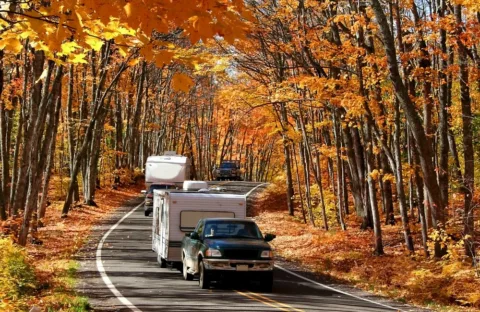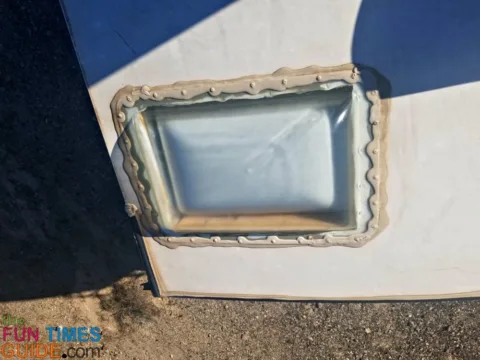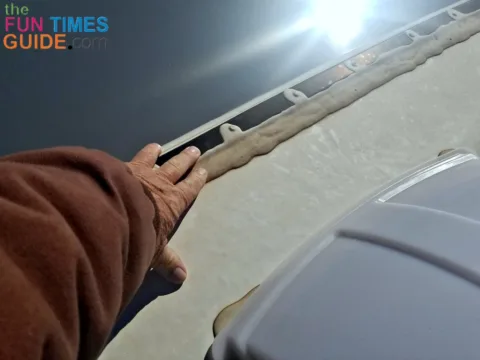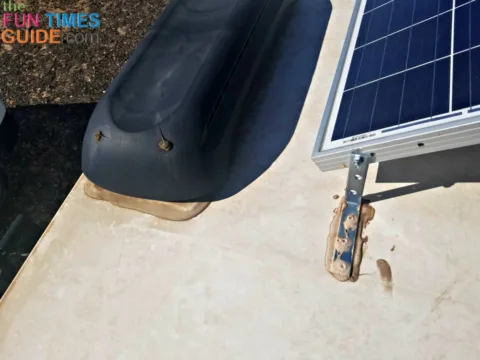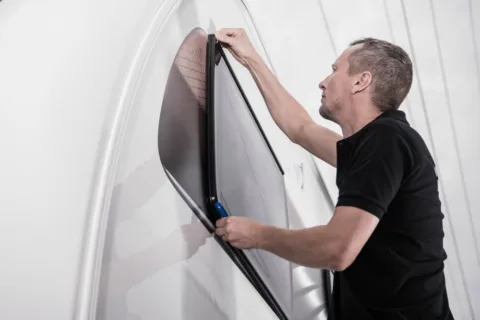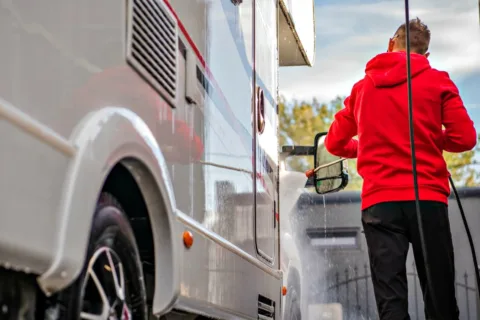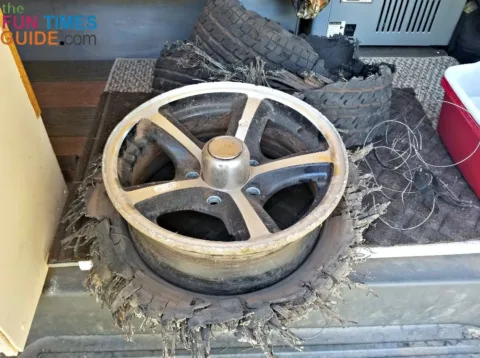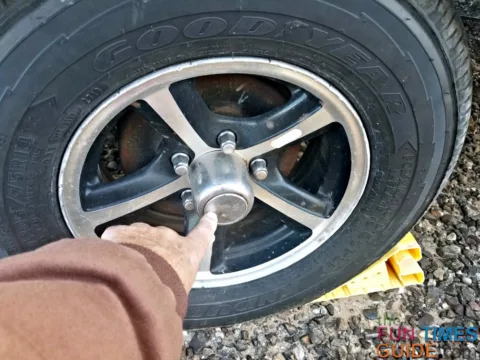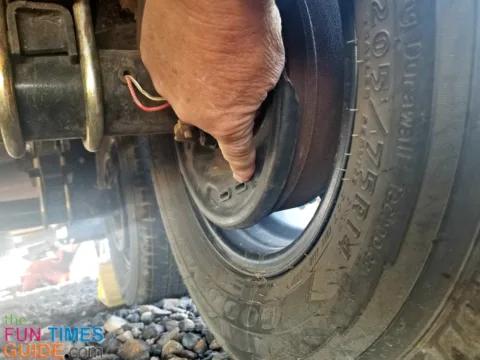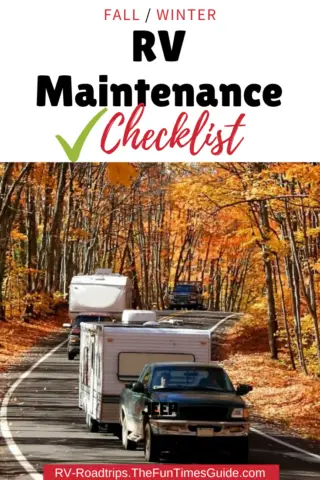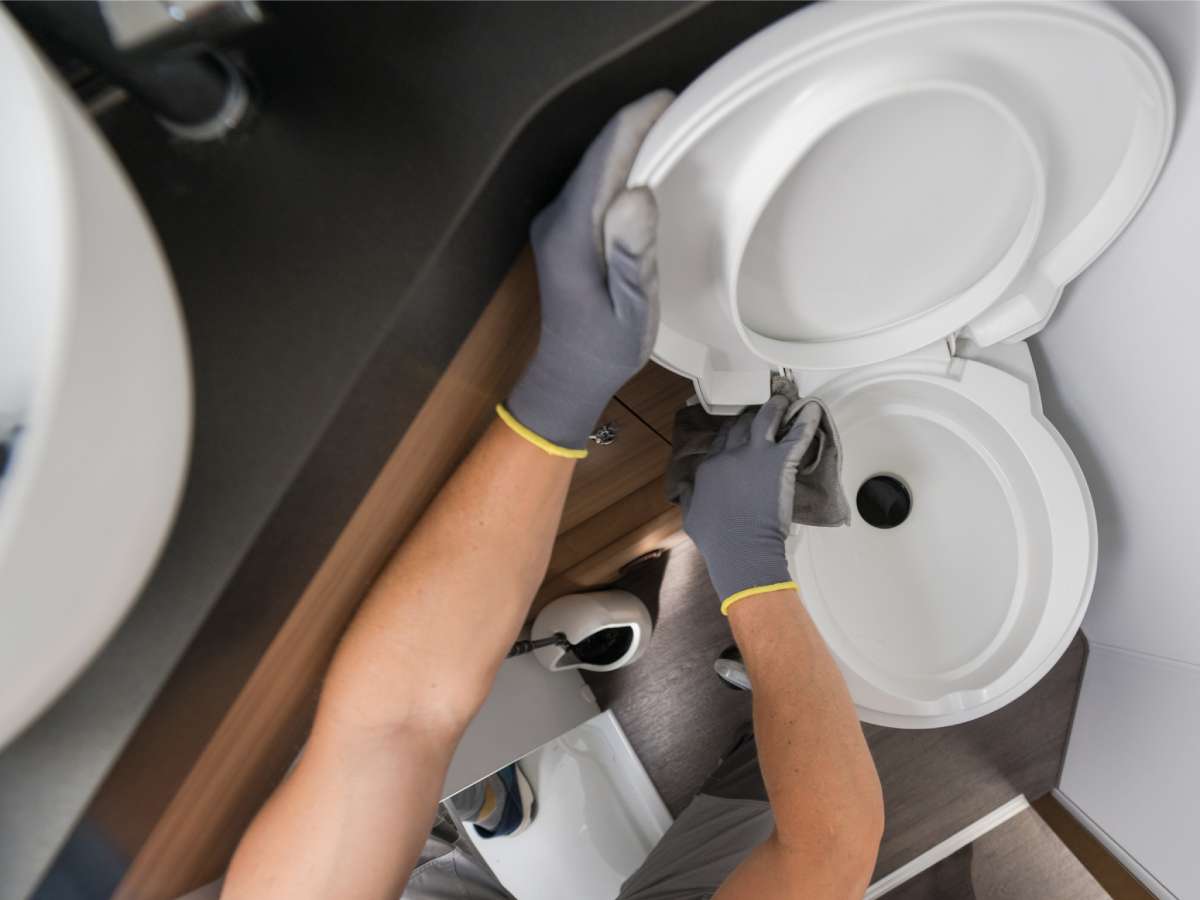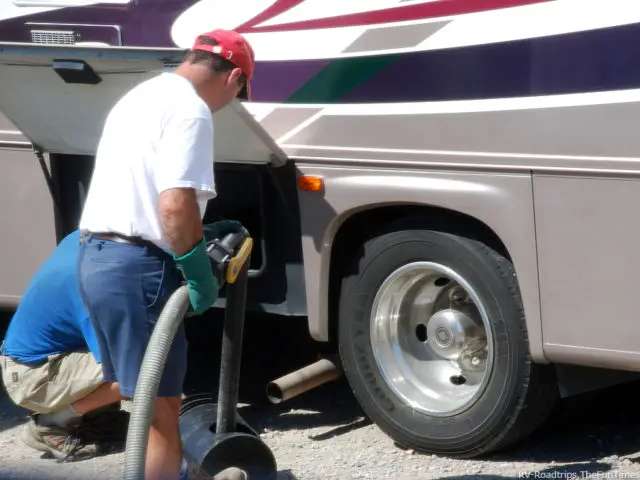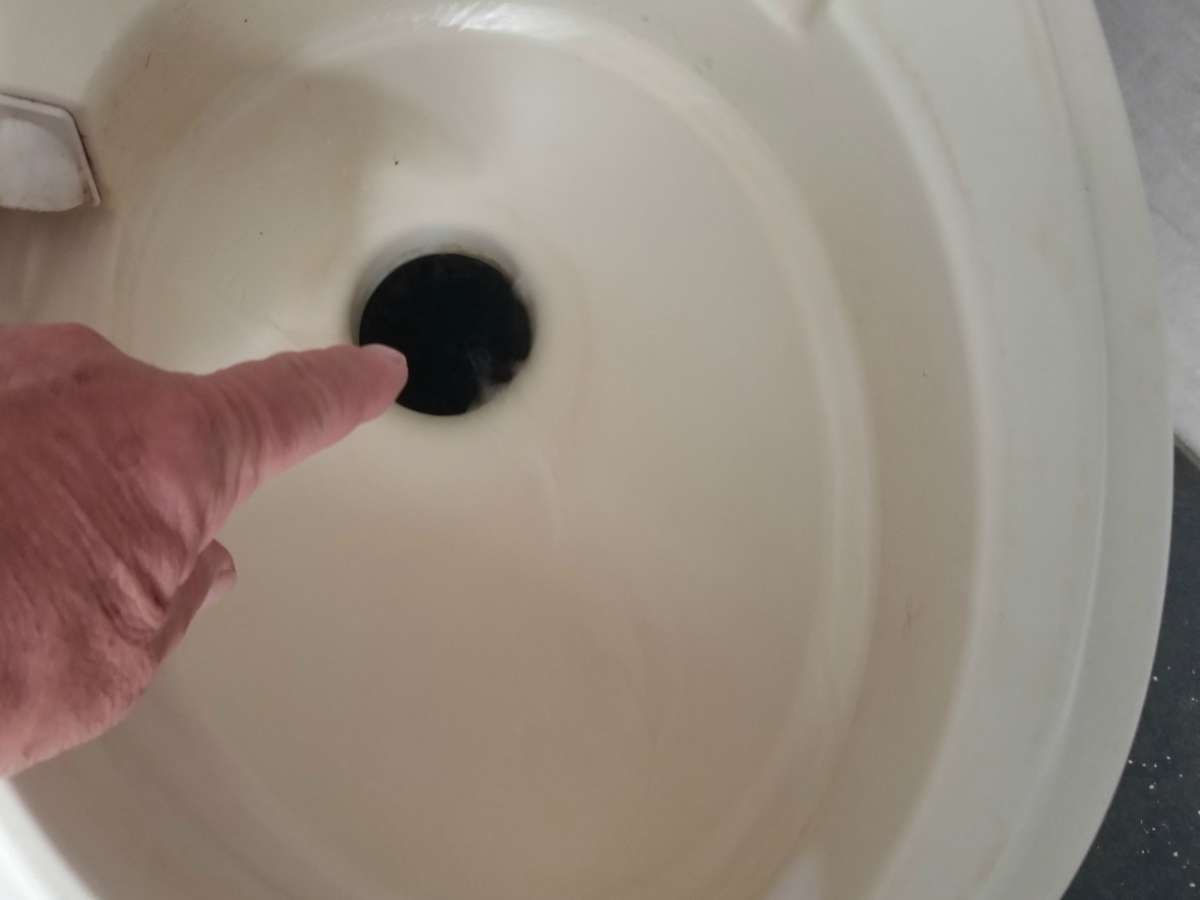Twice a year (in the spring and the fall), there are some RV maintenance requirements that must be addressed in order to keep your rig in top condition.
Taking care of these tasks will:
- Ensure that your investment is protected from routine wear and tear.
- Help you keep a step ahead of problems that may start out small but over time can significantly reduce the value of your RV.
Today, I’m going to talk about the fall/winter RV maintenance tasks that are most important…
Fall/Winter RV Maintenance Tips
If you won’t be driving your RV during the winter months, then winterizing your RV for winter storage is a given.
I wrote an article that shows you how to winterize your RV (including the entire water system) better than an RV dealer would do it!
But there’s more to fall RV maintenance than just protecting the various systems from freezing temperatures.
To keep ahead of wear and tear, you also need to do a comprehensive RV inspection and take care of the following important tasks before winter:
#1 – Inspect the roof and everything on it.
Get up close and personal with every single RV vent, seam, and roof protrusion. You want to check for cracking, peeling, or gaps in the sealant for every screw, bolt, or attachment on the roof of the RV — even the slightest bit of sealant missing is enough for water to seep in.
Water that gets under the roof covering will quickly wick moisture into the insulation and cause rot in any wood structure. It can also travel along both wood and metal structural parts — where it will show its face within the walls and even down to floors.
Water damage is the quickest way to destroy all value to your RV! Many times, it’s just not feasible to repair the damage.
Be sure to inspect the roof sheeting (either rubber or metal) for puncture damage — because a low-hanging branch can easily rip the rubber roof membrane.
Any damage you find can be repaired with:
- Dicor self-leveling sealer – for small punctures
- Eternabond RV roof tape – for larger repair jobs
Another important part of seasonal RV roof maintenance is to check the roof vents. As they age, the plastic deteriorates from being exposed to prolonged rays from the sun.
For example, you may find that the air conditioner covers or RV vent covers have become brittle — at which point, they will break easily.
Vent covers on the roof need to be protected by covers (such as the Max air vent cover) — which will greatly extend the life of the flimsy vent cover that comes on RVs.
Lastly, vibration may loosen bolts or rivets on bat wing style TV antennas. Anything mounted on the roof needs to be checked for damage or loose parts.
#2 – Check the window seals.
From the factory, most RVs rely solely on Butyl tape to seal between the window frame and the side of your RV.
For the first year or so, that is likely to be sufficient — but over time, it will dry out and harden and weaken its grip!
A far better proactive insurance against water intrusion around the RV windows is to apply a thin bead of clear silicone sealant around the window frame — adhering to both the frame and wall of the RV.
Remember, neatness counts! Just a fine bead of silicone sealant (smoothed with your finger) will prevent leaks, without making a mess.
#3 – Wash and wax the RV.
To preserve that new and shiny look and maintain your RV’s exterior, it’s always a good idea to wash your RV on a regular basis and wax your RV at least once a year.
Winter travel will likely include running through various road chemicals that are used to de-ice the highways.
Winter storage will bring weather extremes that can be equally hard on the finish of your RV.
A good coat of wax will help ward off oxidation and stains that will be hard to remove later on. There are many RV wax products that are designed for the specific materials used in the construction of different RVs.
#4 – Check the tires.
Tires are a very important inspection point in regular maintenance of your RV!
I can’t emphasize this enough — because the RV industry hasn’t gotten the message that cheap tires cause accidents. From the factory, most travel trailers come equipped with bottom-dollar cheap imported tires.
Speaking from personal experience, I can tell you that you can’t trust any tire with an unfamiliar brand name that is not produced in the USA.
I experienced a blowout this summer on a 2-year-old travel trailer with less than 2,500 miles. I had inspected my RV tires regularly and made sure that they had the proper inflation numerous times through the year. They looked perfect — no cracks and no separations. There were no warning signs at all!
I recommend replacing original tires on RV trailers within the first year of use to avoid blowouts… and the resulting physical damage that may occur.
At most tire dealers, if you request bulletproof tires rated for highway speeds they will likely recommend Goodyear endurance tires.
#5 – Grease the wheel bearings (…and check the brakes).
Depending on how many miles you travel in your RV trailer, greasing the wheel bearings is an RV maintenance task that you just can’t ignore.
Motorhomes and motorcoaches can go many miles without much attention. However, long-distance travel moves this required task up to once a year.
It’s not that big of a deal if you have Dexter easy lube axles — because no disassembly is required. Standard axles will need to have the hubs removed, cleaned, and the bearings repacked with new grease.
All other suspension points with grease fittings should also be maintained at the same time — including steering and suspension points on motorhomes and suspension points on RV trailers.
And… while you have each wheel off the ground to lubricate the wheel bearings, it’s a good time to check for proper brake function.
With the trailer plugged into the tow vehicle, have someone press the brake pedal while you check that each wheel does apply the brakes.
RV trailers need to have annual brake adjustment as well!
Be sure to torque your wheel nuts to the proper tightness when you’re done to avoid shearing off or stripping wheel studs.
Most current motorhomes have disc or air brakes — allowing for visual inspection of the remaining brake pad wear surface, without any real disassembly.
#6 – Check the engine fluid levels.
Checking fluid levels should be done periodically throughout the year.
During your fall RV maintenance inspection is the best time to top off any of the fluid levels that may be down just a bit:
- Brake fluid
- Coolant
- Transmission fluid
- Engine oil
A fresh oil change in the fall will ensure that you are ready to go RVing again first thing in the spring — when weather turns nice and you’re itching to get out and travel!
And… Don’t Make The Same Mistake I Did!
I have one final word of caution if you’re storing your RV for the winter.
Come spring, you will probably be anxious to get the RV out of storage and start prepping for your first RV trip of the year.
My own experience taught me this valuable lesson: it’s not good to jump the gun and get your RV out of storage too early!
Since my RV trailer was stored miles away from my home and I wanted to start a remodel project in it, I hitched up and pulled it out of the field while there was still several feet of snow on the ground.
The result from all the flexing and turning as I struggled to get the trailer on the road caused the plastic shower stall to shatter! I had no choice but to completely redo the shower structure to repair the damage.
Just remember… aged plastic gets very brittle, and it will shatter when it gets cold.
In this video, I’m walking you through each of these individual fall RV maintenance tasks:
Must read: How To Keep Mice Out Of Your RV During Winter Storage
Like this post? Save it to read again later… or share with others on Pinterest!

